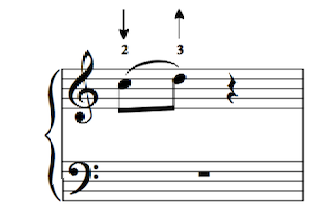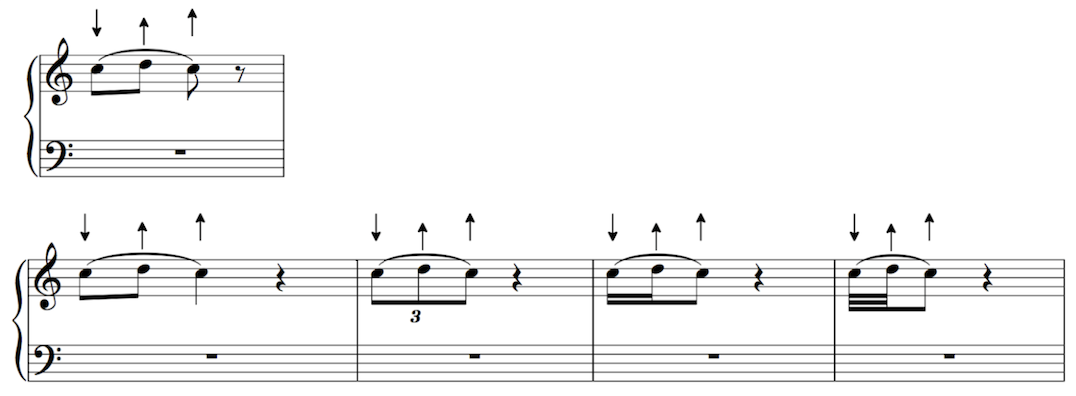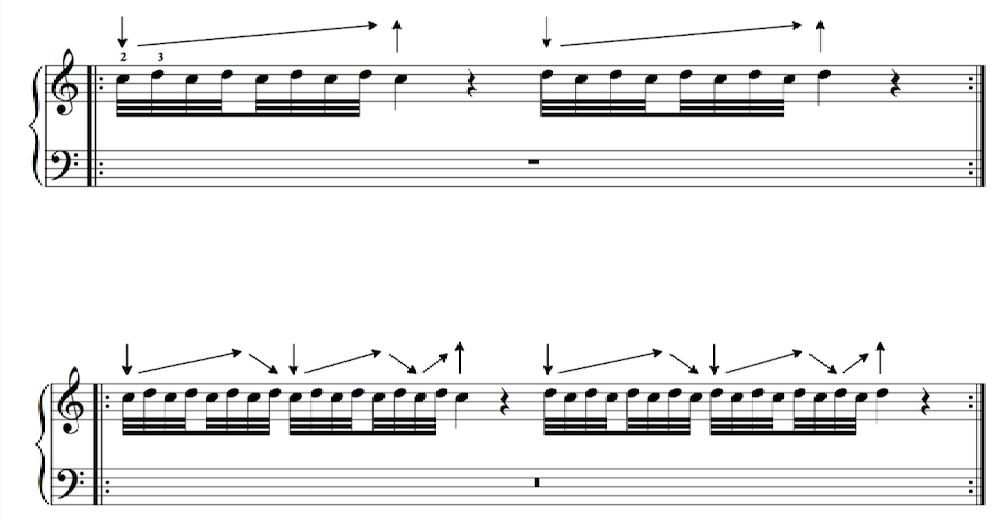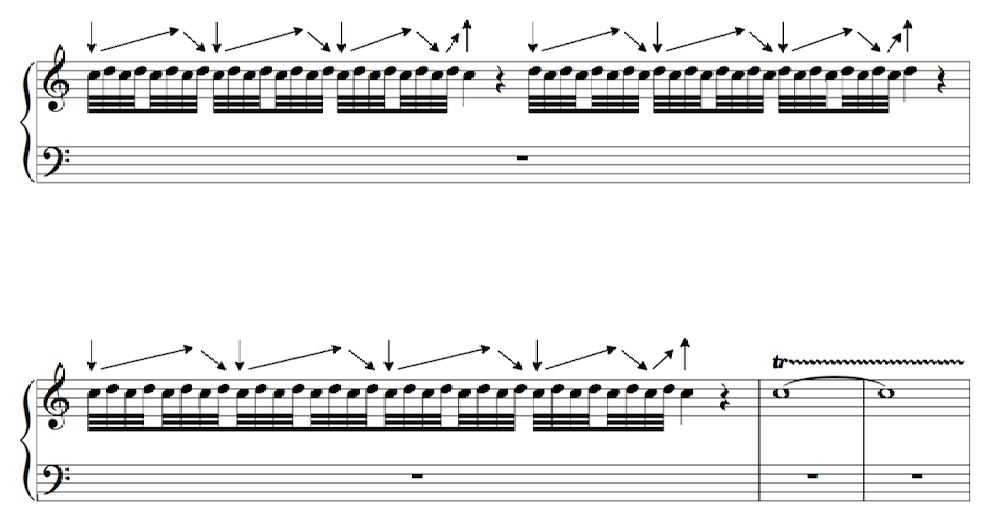- Home >
- Foundations in Piano Technique >
- Trills and Tremolos >
- Trills and Tremolos (8.2)
Trills and Tremolos
Trills and Tremolos (8.2)

- Move the right hand to the C and D above middle C.
- With a supple wrist in the medial range, do a preparatory lift.
- Fingers 2 and 3 perform a two-note slur.
- Play the C by allowing the arm’s weight to descend and rebound just after attack so that the arm is moving slightly forward just after playing the D.
- Remember to play on the pad of the finger while maintaining good bridge support.

- Proceed to three notes by reintroducing the D, but use the same basic motion: lift, drop, and release forward during the arm’s ascent with a continuous transference of arm weight from the first note to the last.
- When excess tension is perceived anywhere in the hand, slow the figure down until it can be performed with ease, allowing any fingers not playing to drag along the top surface of the keys.
- Play the figure with active fingers at successively faster speeds, allowing the fingers to instantaneously release, always returning to a quiet hand between gestures.

- When three notes can be performed at a fast speed with ease, move on to a five-note trill beginning on C.
- Play three Cs with a forward motion, just as in the vibrato technique.
- Then add the Ds to play five notes with a continuous transference of arm weight.

- Proceed from five notes to seven notes, still with one motion that cycles forward.
- Alternate between C and D as the starting note of each figure.
- As before, lift with a supple wrist and a quiet hand.
- Use the momentum from this preparation to generate the rest of the trill’s movement.


- Move on to nine notes and begin to cycle in and out. Cycle another group of eight 16th-notes.
- At the beginning of each group, the wrist is at its lowest point and the arm is further out toward the edge of the keys.
- Reverse the starting notes to begin groups of nine and seventeen notes with the 3rd finger on D.
- As this becomes easier at successively faster speeds, add more groups of notes to perform a continuous cycling trill.

- Introduce a vibrato motion by playing repeated notes with your thumb alone, cycling four notes at a time. The first note of each grouping of four is the lowest point for the wrist.
- Maintain a quiet hand, allowing all other fingers that are not playing to remain resting on the top surface of the keys.

- Add the 5th finger in a tremolo motion to every other group of four notes, cycling in the vibrato motion with just the thumb. That is, play one group of four notes with the thumb alone in eighth notes and follow that with one group of 16th-notes that includes the 5th finger, a sixth above the thumb.
- As you play at succeedingly faster tempi, the range of motion should become smaller.
- Progress to play two groups of 16th-notes and end on a strong beat.
- Expand this to four groups of 16ths.
- If you experience any fatigue or tension, play the tremolo more slowly to assure the quiet hand is maintained and all fingers are releasing.
- Then, increase the speed as this becomes easier to coordinate.
Purchase options
This content is available as a separate, once-off purchase from our store via the following products:
